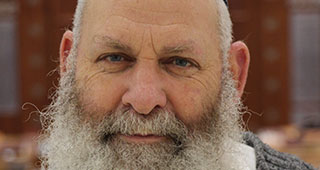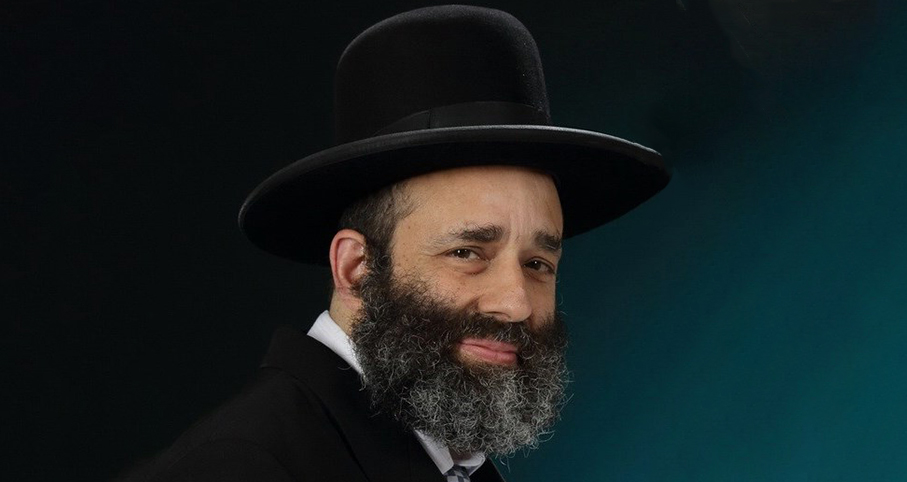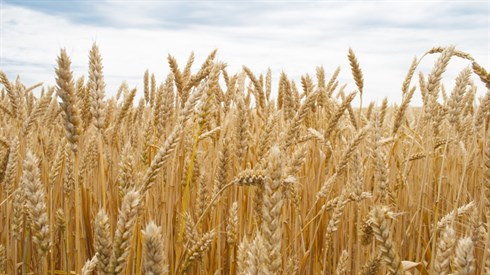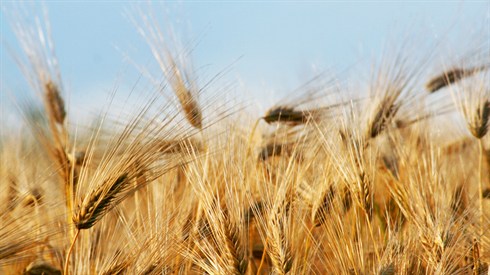- Shabbat and Holidays
- Tu Bishvat
The Torah study is dedicatedin the memory of
Simha Bat Hana
3197
The Mishnah speaks of four different New Years during the year:
"On the first of Nisan it is the New Year for kings and festivals, on the first of Elul the New Year for animal tithes, on the first of Tishrei is the New Year for years and for Sh’mitah and Yovel, for planting and for vegetables, on the first of Shvat is the New Year for trees according to Beit Shamai, Beit Hillel said that it was on the fifteenth of Shvat" (Rosh HaShanah 1:1).
The first day of Nisan was the day that was allocated as being the beginning of the year for kings. This meant that the years of the king’s reign were calculated from Nisan. For example, if he ascended to the throne at anytime during the year between the first of Nisan, 5760 and the first of Nisan, 5761, when the first of Nisan, 5761 arrived it would be reckoned as though he had reigned for an entire year. The year between first of Nisan, 5761 and the first of Nisan, 5762 would be called the second year of his reign, and so forth.
This was an important calculation as contracts used the date based on the year of the king’s reign. Therefore it was essential that the calculation of the year of the reign was universal and exact.
The first of Nisan was also the new year with regards to festivals. The festivals were said to have started with the first festival after the first of Nisan, Pesach. If someone promised to bring a sacrifice or an object to the Temple within the year, the year was calculated from Pesach to Pesach. Only after the three festivals had passed in the order Pesach, Shavuot, Succot, could the individual be held culpable of withholding the sacrifice or the donation and punished. This was the case even if the promise was made any time after Pesach. The punishment was only effected after the three festivals had passed, starting with Pesach.
If a person owned animals ten percent of them were to be donated to the Beit Hamikdash. (See Vayikra 27:32) The animals that had been born in any particular year were tithed separately. For this purpose the year was considered as having started on the first of Elul.
The New Year of Tishrei is the one that we refer to as Rosh HaShanah, The New Year. The Mishnah calls it the new year for years, meaning that the years are calculated from the first of Tishrei, as are the years for the Sh’mitah, the seventh fallow year (see Vayikra 25:4) and the Yovel, the jubilee that occurred every fifty years.(See ibid. 25:10)
In addition, the first of Tishrei was the date that determined the beginning of the year when it came to the three years that a tree must be left ungleaned (see Vayikra 19:23) and for the tithing of vegetables.
The final new year mentioned in the Mishnah is one during the month of Shvat and is referred to as the New Year for Trees. The halachah has been decided in favour of Beit Hillel, and so we celebrate this occasion on the fifteenth of Shvat, and call it Tu B’Shvat, Tu being the Hebrew letters that add up to fifteen.
The New Year for Trees also refers to tithes, the ten percent donated to the Beit Hamikdash. In this case it is the tithes of the fruit. The ‘fruit-year’ relates to the new fruit crop that is obligated in each year’s tithe. The Gemara explains that this date was chosen as "most of the season’s rainfall has already fallen" (Rosh HaShanah 14a). The fruit begins to bud and bloom around this time, after the rains, half way between the autumn and the spring.
Essentially, therefore, Tu B’Shvat is an agricultural landmark during the annual cycle. It is interesting to note that most of us pay little or no attention to the other agricultural new years, those of the 1st of Nisan, the 1st of Elul and the agricultural aspects of the 1st of Tishrei. We do celebrate Rosh HaShanah on the 1st of Tishrei, but not connected to planting and tithing. But many people do celebrate Tu B’Shvat, as an opportunity to ponder nature and the environment.
These celebrations take different forms. The Shulchan Aruch mentions the days on which we do not recite the sad Tachanun prayer, one of them being the fifteenth day of the month of Shvat. The Mishnah Berurah comments "there is a custom among the Ashkenazi Jews to have a lot of different types of fruit on that day" (Mishnah Berurah note 31 on Shulchan Aruch, Orach Chayim 131:6).
Today this has become a widespread custom and many communities have an entire Seder Tu B’Shvat with appropriate readings, along with the consumption of wine and many types of fruit, particularly those from the Land of Israel.
In Israel, schools and communities go out to the fields to plant trees. This enhances the connection with the land and is a practical measure to ensure the spread of much-needed trees in the Land of Israel.
It is appropriate to look at a story found in the Gemara that deals with planting trees and has a message of ecology and conservation.
The Planter and the Sleepy Rabbi
The Gemara tells a story that at first seems strange and fanciful, but carries a deep message learnt from the tree itself.
The Gemara talks of Choni the Circlemaker, who received this name as the result of an incident in which he was involved. There was no rain in the land of Israel, and the rabbis came to Choni to ask him to pray to God. He drew a circle on the ground and threatened God that he would stand in the circle and not budge until the rains came. When it rained lightly he rebuked God and demanded more heavy rain, when the rains came too heavily, again he requested that God adjust the force until it was just right. The rabbis were horrified, but said "What can we do, as He answers you?"
The Gemara then continues to tell another tale of Choni the Circlemaker.
"His whole life he pondered the verse ‘A song of ascent, when God returns us to Zion, we were like dreamers’ (Tehilim 126:1) Can someone sleep for seventy years?
One day he was walking along the road and came across a man who was planting carob trees.
‘Those trees, how long does it take them to bear fruit,’ he asked.
‘Seventy years,’ replied the man.
‘Are you so certain that you are going to live for another seventy years?’
‘I found a world that had carob trees growing in it, in the same way that my father planted for me, so will I plant for my children.’
[Choni] fell asleep, and slept for seventy years. When he awoke he saw a man gathering carobs from the tree.
‘Are you the one who planted this tree?’ he asked.
‘I am his grandson.’
‘I must have slept for seventy years,’ said Choni to himself. He saw that his donkey had given birth to a whole herd of donkeys.
He went to his house.
‘Is Choni’s son around here?’ he asked.
‘His son is no longer with us, but his grandson is here,’ they said to him.
‘I am Choni the Circlemaker,’ he told them. They did not believe him.
He went to the study hall and he heard the rabbis say,
‘Things are so clear today, like in the days of Choni the Circlemaker, that every question that the rabbis had, he knew how to answer.’
‘I am he,’ said Choni. They did not believe him and they did not respect him.
He was weakened and asked that God should be merciful to him, and he died.
Rava said ‘Like people say, either a study partner, or death’" (Ta’anit 23a).
One day he was walking along the road and came across a man who was planting carob trees.
‘Those trees, how long does it take them to bear fruit,’ he asked.
‘Seventy years,’ replied the man.
‘Are you so certain that you are going to live for another seventy years?’
‘I found a world that had carob trees growing in it, in the same way that my father planted for me, so will I plant for my children.’
[Choni] fell asleep, and slept for seventy years. When he awoke he saw a man gathering carobs from the tree.
‘Are you the one who planted this tree?’ he asked.
‘I am his grandson.’
‘I must have slept for seventy years,’ said Choni to himself. He saw that his donkey had given birth to a whole herd of donkeys.
He went to his house.
‘Is Choni’s son around here?’ he asked.
‘His son is no longer with us, but his grandson is here,’ they said to him.
‘I am Choni the Circlemaker,’ he told them. They did not believe him.
He went to the study hall and he heard the rabbis say,
‘Things are so clear today, like in the days of Choni the Circlemaker, that every question that the rabbis had, he knew how to answer.’
‘I am he,’ said Choni. They did not believe him and they did not respect him.
He was weakened and asked that God should be merciful to him, and he died.
Rava said ‘Like people say, either a study partner, or death’" (Ta’anit 23a).
There is much to be learnt from this vaguely esoteric passage, and many lessons have been drawn from these words. Some have read it as an allusion to the fact that pain, even psychological pain, can be a factor in the decision not to treat a patient1. Choni prayed to die as he was depressed and not respected. God answered his prayer, and this is described by the Gemara as a show of Divine mercy.
There are a number of difficult components of the passage. What was the original problem that so vexed Choni? What was the meaning of his discussion with the planter? Why did he ask to die, what was so terrible about his situation?
Like Dreamers. For Seventy Years?
The Gemara opens by informing us that Choni was troubled by the verse "A song of ascent, when God returns us to Zion, we were like dreamers". We recite this passage as part of the Birkat HaMazon the blessing after a meal, on Shabbat and the festivals. It is the opening verse of the "Shir HaMa’alot", the chapter of Psalms, that we use on these occasions to introduce the blessing.
When we return to Zion we will discover that the entire time that we were away, it was as though we were dreamers. The Jewish people as both individuals and as a national entity during the exile were dormant, sleepy, like dreamers.
The Babylonian exile lasted for seventy years. This was the promise and prophecy made by Yirmeyahu "After the seventy years of Bavel are over I will remember you, and I will fulfill My good word to return you to this place" (Yirmeyahu 29:10). During those seventy years the Jewish people were in exile in Bavel. It was not easy to live in the land of another nation, to be subjugated by them and subservient to them. But there was another problem that faced the Jewish people in exile.
"Next to the rivers of Bavel we sat and cried when we remembered Zion. We hung our lyres on the willows. For those who carried us away captive asked us there for a song. Saying ‘Sing us one of the songs of Zion.’ How can we sing God’s song in a strange land? If I should forget you, Jerusalem, may my right hand be forgotten. My tongue should stick to the roof of my mouth if I don’t remember you, if I don’t set Jerusalem above my highest joy [in Babylon]" (Tehilim 137:1-6).
It was bad enough to suffer physical pain in the exile and to live as captives. It was made excruciatingly worse by the psychological anguish of living as a Jew and as a Jewish people in a foreign land and environment. How can we sing God’s song in a strange land? How can we survive as Jews and as a nation there in the exile?
This question greatly troubled the Jews in exile and Choni living in a period of instability for the Jews and the Jewish people. Choni was troubled for his whole life over the verse "When God returns us to Zion, we were like dreamers". The verse implies that the entire period of the exile was like one long dream, as though the Jewish people were asleep for the seventy years of their exile.
In such a context Choni’s question "Can someone sleep for seventy years?" is one of despair and anguish. Can the Jewish people really survive their seventy years of suspended animation? How will they manage outside of their own land, how will they fair in the foreign land and culture of Babylon?
The story that followed served to teach Choni the method through which the Jews and the Jewish people would survive.
Either a Friend or Death
Leaving aside the conversation with the planter for a moment let us turn to Choni’s sleep and what happened to him after he awoke.
Choni woke up from his long seventy-year nap and saw a world that had moved on and changed considerably since his day. His friends had all died, as had their children. The inhabitants of this new world were the third generation, the grandchildren of his contemporaries’. Everywhere that he went he was remembered, but as a historical figure and not as a living entity. This must have caused Choni great psychological pain and frustration. It was this that led him to ask to die out of mercy.
Yet when we analyse his situation was it really all that bad that the only way out was to die? Did Rava need to make the frightening and depressing observation "either a study partner or death"?
Let us look at what Choni did have in his new world. He had a great and honourable past. All remembered Choni as the wise sage. He was probably fondly recalled at home, even though they may have had a hard time explaining his sudden and mysterious disappearance years ago. When Choni returned they answered that his grandson is here. They did not need to ask who Choni was, but immediately recollected the name from the illustrious family past. However, they did not believe the old disheveled man who claimed to be the very same Choni of blessed memory.
Choni went to the next place that he was known, to the study hall, his other home, a familiar environment. Again, Choni stilled lived and thrived in the memories of the talmudic scholars and students. Choni was a celebrity name, a concept that signified clarity and immense Torah knowledge and erudition. So Choni had a past.
He also had a future. When he came home he met his grandson and descendants. The name and family of Choni would survive into the future. Even his donkey had procreated and given birth to an entire herd of animals. The future lay before him.
So Choni had both a past and a future. But there was one thing that he did not have. He had no present. He was remembered and he lived on in the minds of others and through his offspring, but he had no part in his new world. They did not believe that this man was Choni, they showed him no respect. He was nobody.
In order to bring the past to the future one needs to live in the present. Choni had slept through his present. The past was over, and the future had arrived without him. He was superfluous to the world, he was a redundant element. Man cannot survive only by living in the past or by looking to the future. To survive he needs to live in the present. He needs to invest in the present in order to ensure that yesterday’s dreams will be become tomorrow’s realities.
When Choni had no present his life was meaningless and the only course of action was to leave the present and the world itself. With no friends and no one to learn with, no one to accept him as he was today, he asked for mercy and died.
The Lesson of the Carob Tree
We can now understand the conversation with the planter prior to Choni falling asleep. Choni was still troubled by the verse when he encountered the man planting the carob tree. This sight amazed Choni. "Are you so certain that you are going to live for another seventy years?" This question is odd and reveals a lot about Choni the Circlemaker’s perspective at that point.
When Choni asked the man whether he believed that he would live for seventy years, there was a significant implication in his question. He implied that were the man not to live for seventy years, and not enjoy the fruits of his labour, then it was all for nothing. If he did not benefit directly in the future why would he want to work in the present? Choni was displaying his understanding that the present is only significant if it links the past to the future in a visible and tangible way. Otherwise, the present is just something to be lived through while we remember the golden past and wait for the rosy future to arrive.
In such a context Choni was disturbed by the Jews going into exile. If they themselves would not return, then how could they survive? Or more importantly, why would they want to continue if they did not reap the rewards of their toil? How would the Jews survive seventy years of an unnatural state of affairs?
The man answered Choni and taught him a lesson about ecology, life and Jewish survival. "I found a world that had carob trees growing in it, in the same way that my father planted for me, so will I plant for my children." I do not need to reap all of the benefits of my actions. But if I do not act in the present I ensure that the achievements and gifts of the past will not pass on to the future generations. Only by my perseverance today can I promise that the world will continue tomorrow. And if the world continues tomorrow then there is chance that it will improve. As long as we survive as individuals and as a nation, then we have the opportunity to improve our lot and that of our people.
Working in the Present, Investing in the Future
It all depends on whether we work in the present as an investment for the future.
Maybe that is the example that we can draw from the tree itself. There is a nice story in the Gemara of a man who was on a trek through a barren and hot desert. "He was hungry, tired and thirsty. He came across a tree that had sweet fruit, a nice shade and a cool brook running underneath it. He ate from the fruit, drank some water and sat in the shade.
When the time came to leave he said ‘O, tree, how can I bless you? If I were to say that you should have sweet fruit, you already have sweet fruit, if I were to say that you should have a pleasant shade, you already have a pleasant shade, a running stream, you have already. Rather, may it be His will that all of your offspring should be like you’" (Ta’anit 5b).
The tree is an entire factory designed to produce more and more trees. Even the fruit that we view as being the end product of the tree is in fact an ingenious way to ensure the spread of seeds and of new trees. The tree is entirely concerned with the future, but the tree ‘works’ in the present as an investment in the future.
This was the lesson for Choni the Circlemaker. Do not fear the present, do not dwell on the past, nor live for the future at the expense of the present. Rather, one should toil in the present in order to link the past with the future.
This is the message of Tu B’Shvat. Planting trees, concern for the environment, both physical and spiritual, is a way that we work today to bring yesterday through to tomorrow. In this way we give credence and meaning to the past, the present and to the future.
--------------------
To see and buy the book please go to: http://www.growingjewish.com

Dates, Pomegranates, and Eretz Yisrael
Rabbi Chaim Avihau Schwartz | Tu BiShvat, 5757

What is Unique About the Fruit of Eretz Yisrael
Rabbi Stewart Weiss | Shvat 13 5781

What Is Unique About the Fruits of Eretz Yisrael?
Rabbi Stewart Weiss | Shvat 10 5782

Roots
Rabbi Yerachmiel Yaakov Duschinsky zt"l | 5772

Some Shatnez Basics
Rabbi Yirmiyohu Kaganoff | 5771

The Mitzvah of Mezuzah for Renters
Rabbi Hershel Schachter | כ' טבת תשס"א
10. Listening to Music on Electronic Devices
Chapter 3: Customs of Mourning during the Omer Period
Rabbi Eliezer Melamed | Tishrei 30 5782
Mentioning Rain and Praying for It
Chapter Eighteen-Part Two
Rabbi Eliezer Melamed | 5775
Daf Yomi Makkot Daf 8
R' Eli Stefansky | 18 Nisan 5785
Daf Yomi Makkot Daf 11
R' Eli Stefansky | 21 Nisan 5785
Daf Yomi Makkot Daf 9
R' Eli Stefansky | 19 Nisan 5785






